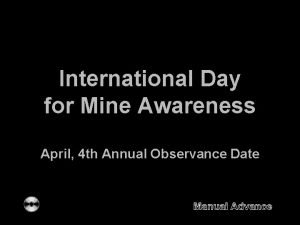II INTERNATIONAL CONFERENCE KRASNOYARSK RUSSIA 16 18 April





- Slides: 5

II INTERNATIONAL CONFERENCE KRASNOYARSK, RUSSIA 16 -18 April 2020 «MIP: Engineering-2020: Modernization, Innovations, Progress: Advanced Technologies in Material Science, Mechanical and Automation Engineering» «Laser airborne reflection method for remote sensing forest species composition» M L Belov, А М Belov, V A Gorodnichev and S V Аlkov

02 Problem statement • Remote aerospace monitoring of large forestlands • Sensing the forest sites with dominant needle-leaved or broadleaved tree species • Sensing the forest sites at any time of the day or night in a wide range of weathering conditions • Sensing the forest sites in the eye-safe spectral bands Figure 1. Reflection coefficients of tree species.

03 Solution methods • Reflection spectra of broadleaved tree species differ from those of the needle-leaved ones in spectral bands 1500 – 1800 nm and 2050 – 2300 nm • We use a ratio R of the reflection coefficients of plants at two wavelengths 355 nm and 2100 nm Figure 2. R values at 355 and 2100 nm for trees. Figure 3. R values at 355 and 2100 nm for trees after averaging. The item numbers 1 -26 (figures 2, 3) are broadleaved trees in summer season. The item numbers 27 -55 (figures 2, 3) are needle-leaved trees in summer season.

04 Table 1. Probabilities of the correct detection Pd and the false alarm Pa for the sensing wavelengths 355 nm and 2100 nm (δ – noise relative mean square deviation) δ (%) Pd Pa 1 0. 99 <0. 01 3 0. 96 0. 06 5 0. 94 0. 07 10 0. 89 0. 12 Table 2. Probabilities of the correct detection Pd and the false alarm Pa for the sensing wavelengths 355 nm and 2100 nm after averaging δ (%) Pd Pa 1 1 0 3 0. 99 <0. 01 5 0. 96 0. 01 10 0. 93 0. 04 Conclusions • Statistical modelling of the correct detection and false alarm probabilities has been implemented to identify dominant (needle-leaved or broadleaved) tree species through laser sensing in the UV and NIR spectral bands • It is shown that the laser method of monitoring at eye-safe wavelengths 355 and 2100 nm wavelengths allows sensing dominant needleleaved or broadleaved tree species with a probability of correct detection close to one and a ~ probability of false alarm second decimal places • The method using two eye-safe sensing wavelengths can be used for airborne forest monitoring

05 Contacts M L Belov, A M Belov, V A Gorodnichev and S V Alkov Bauman Moscow State Technical University (BMSTU), 2 nd Baumanskaya str. 5, Moscow, Russia 105005 E-mail: belov@bmstu. ru «MIP: Engineering-2020: Modernization, Innovations, Progress: Advanced Technologies in Material Science, Mechanical and Automation Engineering»









